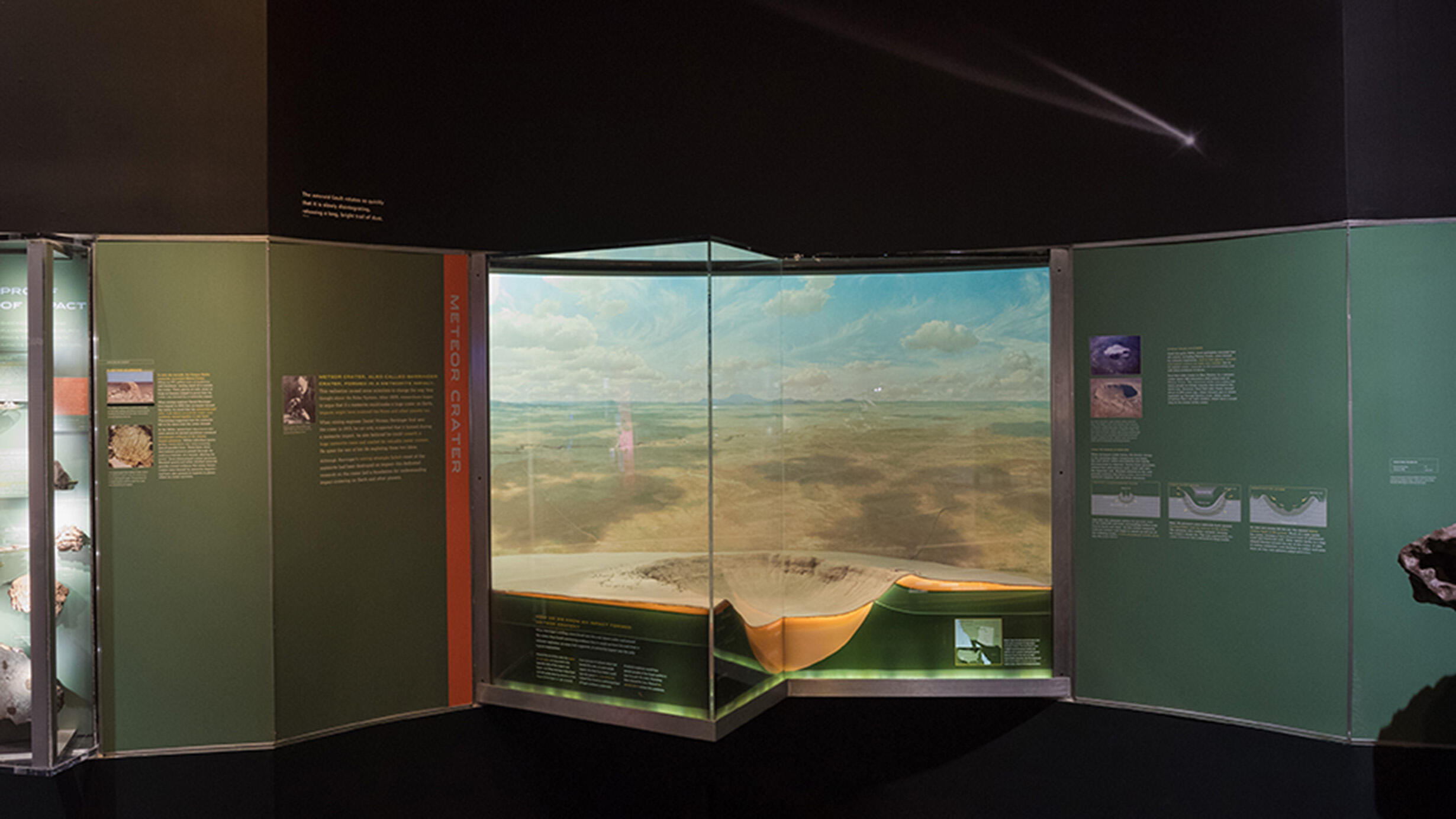Barringer Crater
Part of Hall of Meteorites.
Part of Hall of Meteorites.
 M. Shanley/© AMNH
M. Shanley/© AMNH Meteor Crater, also called Barringer Crater, formed in a meteorite impact. This realization caused some scientists to change the way they thought about the solar system. After 1909, researchers began to argue that if a meteorite could make a huge crater on Earth, impacts might have cratered the Moon and other planets too.
When mining engineer Daniel Moreau Barringer first saw the crater in 1903, he not only suspected that it formed during a meteorite impact, he also believed he could unearth a huge meteorite mass and market its valuable metal content. He spent the rest of his life exploring these two ideas.
Although Barringer's mining attempts failed-most of the meteorite had been destroyed on impact-his dedicated research on the crater laid a foundation for understanding impact cratering on Earth and other planets.
How do we know an impact formed Meteor Crater?
When Barringer's drilling crews bored into the rock layers under and around the crater, they found convincing evidence that it could not have formed from a volcanic explosion, as some had suggested. A meteorite impact was the only logical explanation.
Around the rim of the crater, the layers of rock debris are deposited in the opposite order of the original rock layers -- as if they had been folded back and laid upside down by the force of the impact (brown layers, to right of crater).
If an explosion of volcanic steam had formed the crater, as some people argued, the blast from below would have disrupted the underlying rock. Instead they found an undisturbed layer of Supai sandstone.
A volcanic explosion would have ejected samples of the Supai sandstone layer beneath the crater, depositing them around the rim. None of the ejected debris contain this sandstone.
Meteor Crater
Meteor Crater, the best-preserved impact crater in the world, is located in the high desert of northern Arizona. The name Meteor Crater is slightly inaccurate because meteors, by definition, burn up before reaching the ground.
Meteorites found at the crater are called Canyon Diablo meteorites, after the nearest post office. Canyon Diablo is also the name of a nearby canyon, shown in the background above.